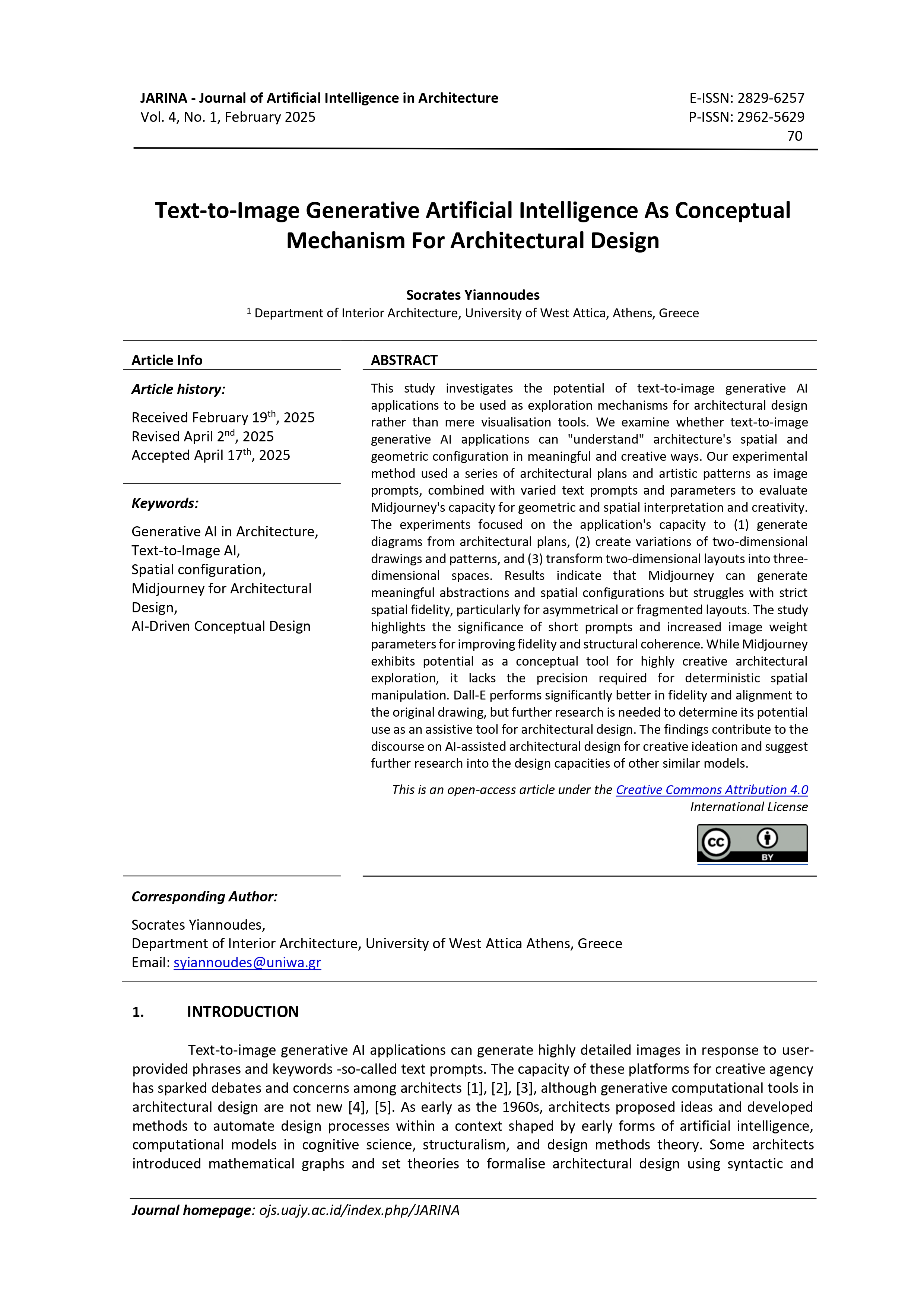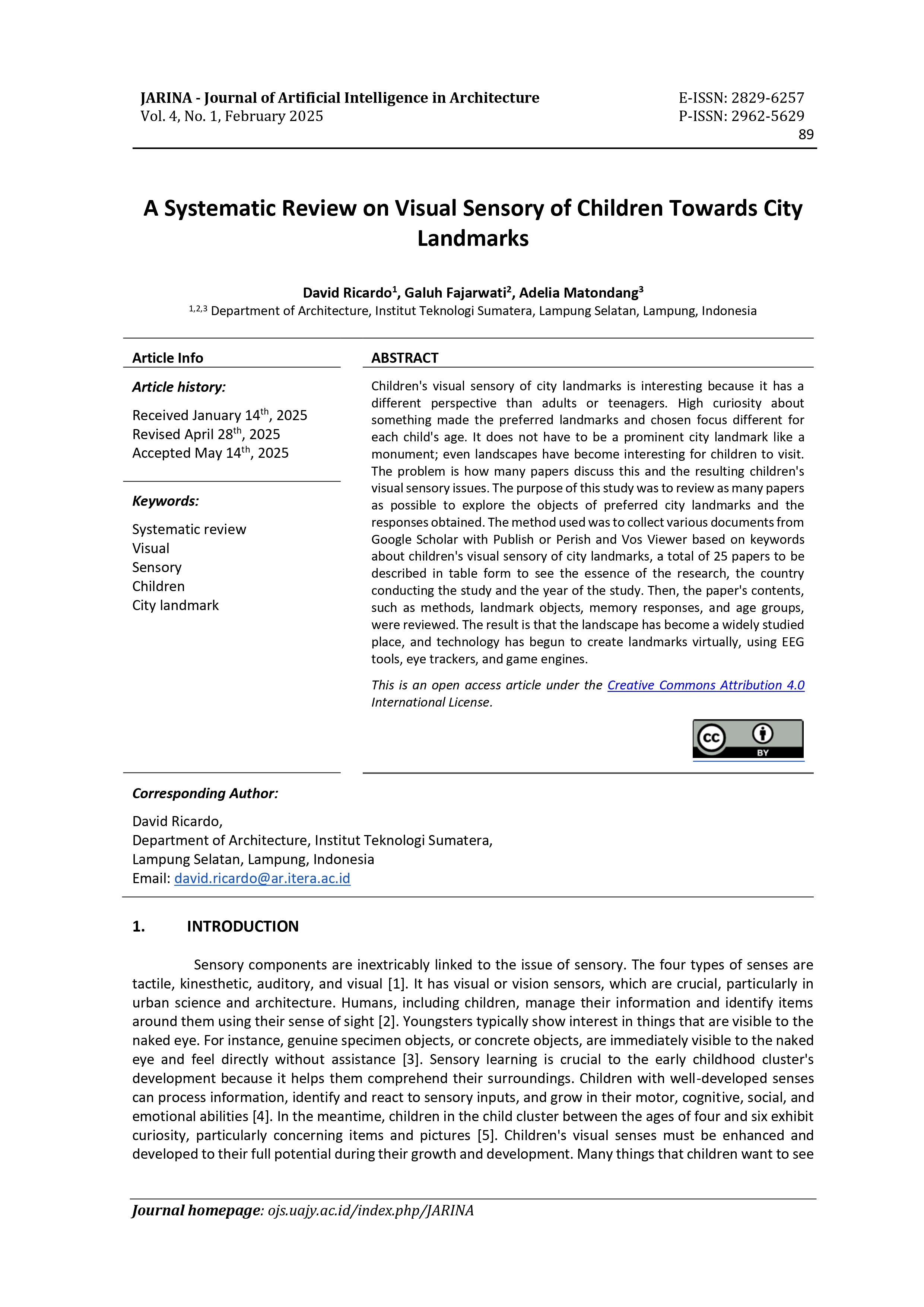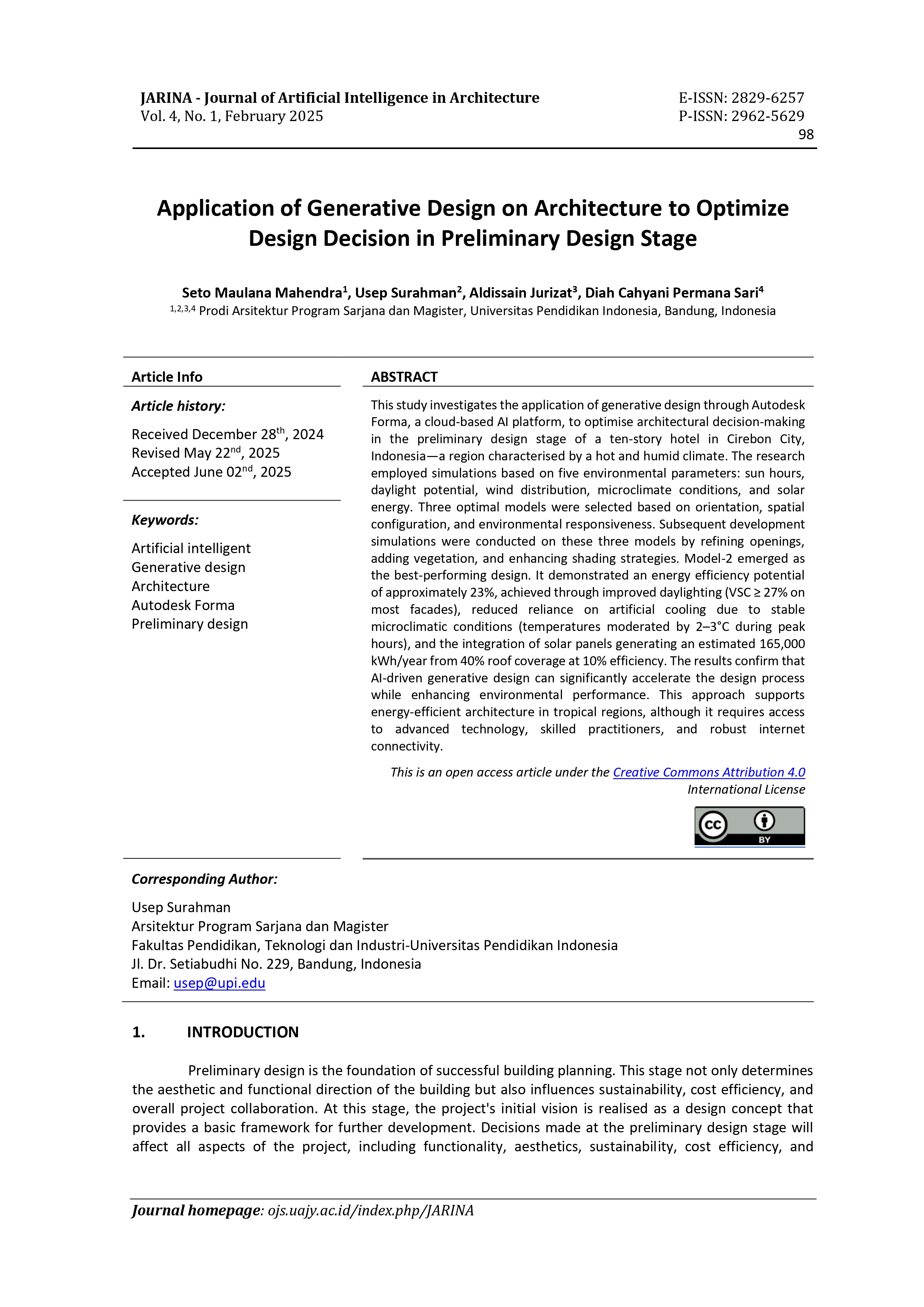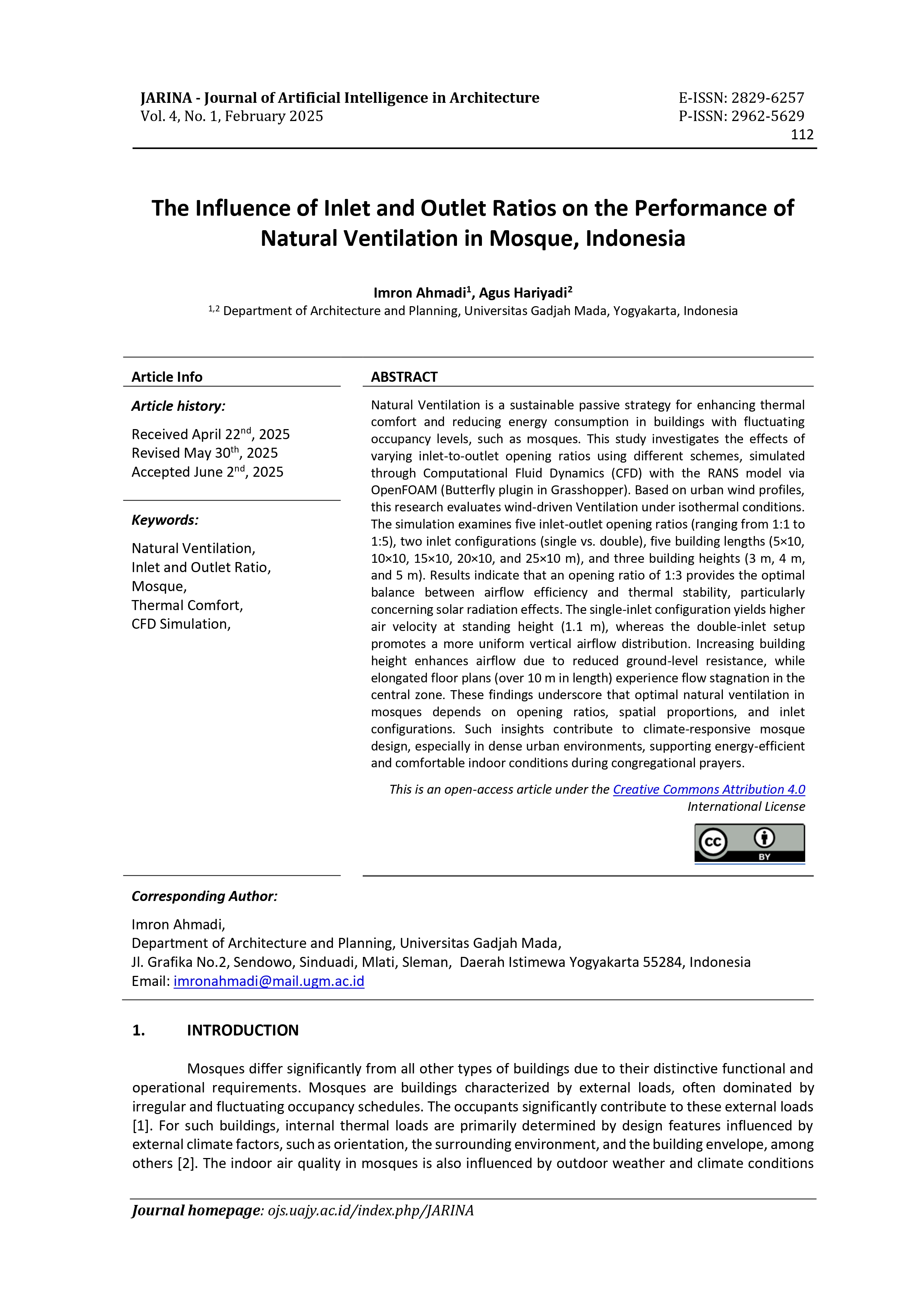Publishing JARINA Vol 4. No .1, 2025
[Publishing & Call for Paper Announcement]
Dear Author,
We proudly announce that JARINA (Journal of Artificial Intelligence in Architecture) Vol. 4 No 1, 2025 has been published (February, 2025) with topic title
The AI-Driven Evolution: Transforming Architecture, Design, and Urban Spaces through Innovation and Immersive Technologies
(https://ojs.uajy.ac.id/index.php/JARINA/issue/view/518)
We kindly invite you to submit a high-quality research paper for JARINA Vol.4 No.2, 2025
Herewith our upcoming agenda:
TIMELINE
JARINA Vol. 4 No. 2, 2025
Submission Period : February - April 2025
Submission Deadline : April 18th, 2025
Letter of Acceptance : After Reviewed
Published : August 2025
Register/Login via OJS JARINA, Link : https://ojs.uajy.ac.id/index.php/JARINA/
Thankyou
Warm Regards,
-JARINA Editorial Team-

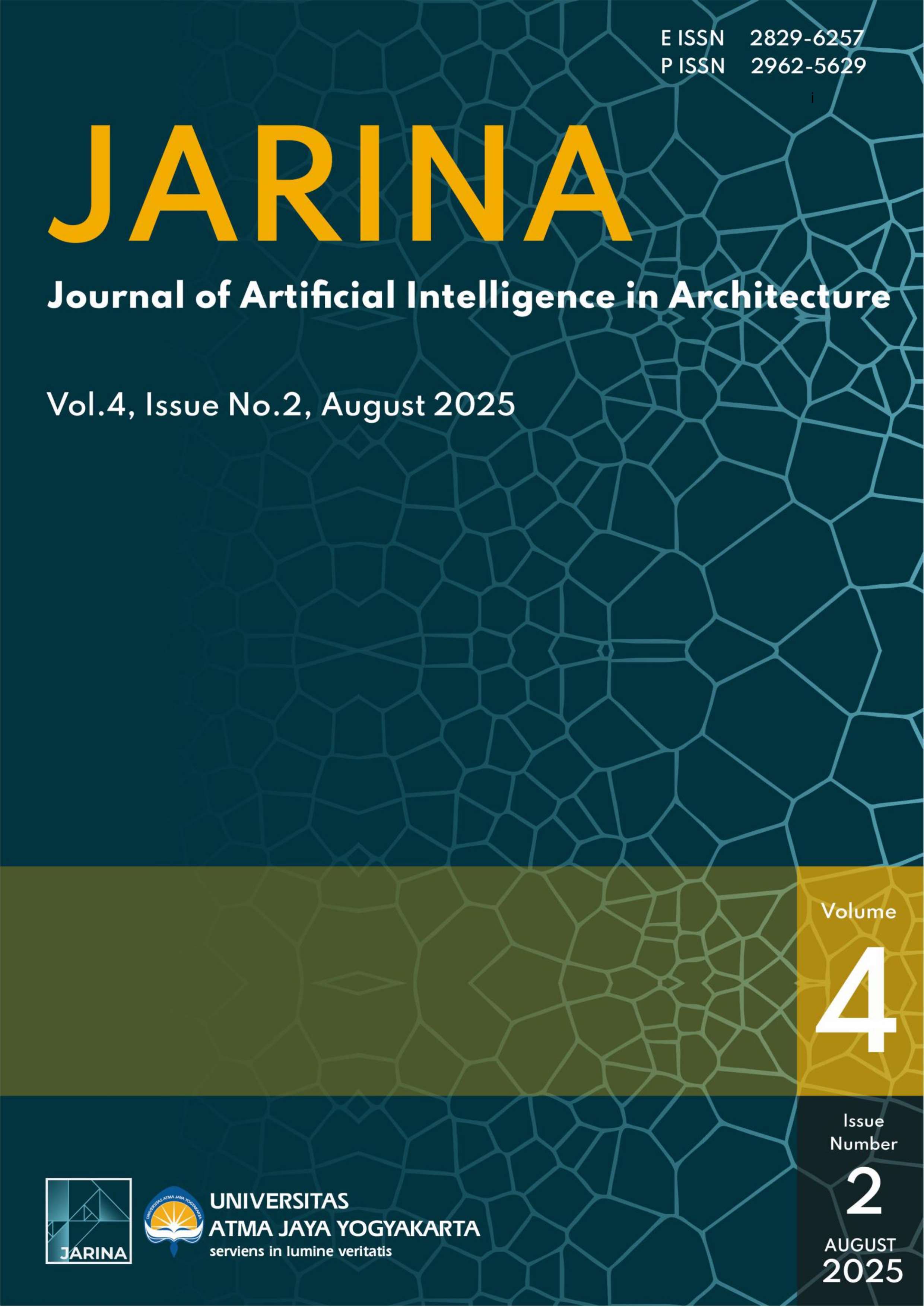
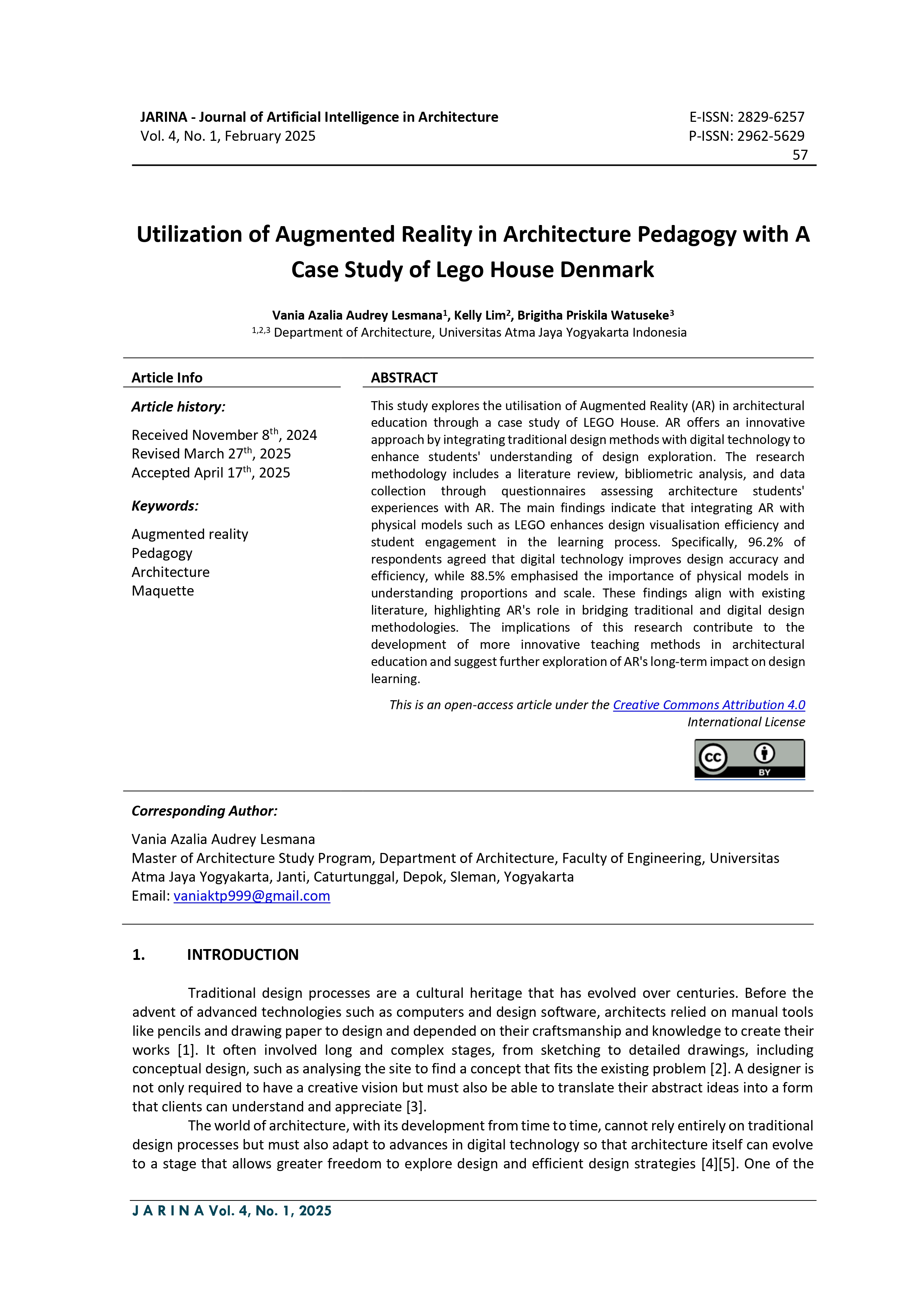
 Abstract views: 165 times |
Abstract views: 165 times |  Downloads: 126 times |
Downloads: 126 times |
